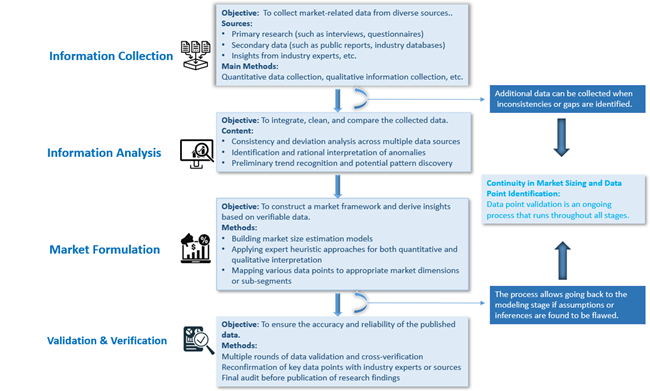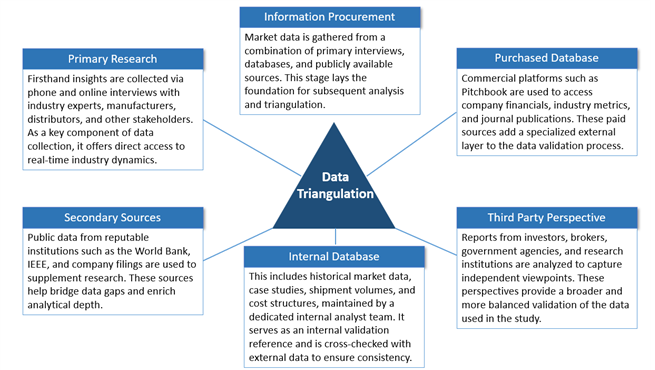Electronic Design Automation(EDA) refers to a comprehensive suite of computer-aided tools used for thedesign, simulation, and verification of integrated circuits (ICs). As a coreupstream technology in the semiconductor value chain, EDA significantly improveschip development efficiency and reduces design complexity. The level of EDAtechnology directly determines chip performance and the overall innovationcapacity of the industry.
In the post-Moore’s Law era, technological driverssuch as increasing single-chip integration, functional convergence, advancedprocesses, and new materials continue to evolve. These trends lead to risingchip integration and design complexity, elevating risks of tape-out failuresand dramatically increasing the cost of prototyping and verification. Accordingto SemiEngineering, the cost of designing a 28nm chip is around $51.3 million,while a 7nm design costs approximately $297 million. Projections suggest that3nm chip design could cost close to $1 billion. As advanced nodes drive updesign costs, the EDA market is expected to continue expanding.
According to LookWhole Insight, the global SemiconductorEDA Software market is projected to reach USD 12.17 Billion in 2024. It is expected to grow to USD 29.83 Billion by 2033,registering a compound annual growth rate (CAGR) of 10.48% during the forecastperiod (2025–2033). - LookWhole Insight
Semiconductor EDA Software Market Analysis
Electronic Design Automation(EDA) refers to a comprehensive suite of computer-aided tools used for thedesign, simulation, and verification of integrated circuits (ICs). As a coreupstream technology in the semiconductor value chain, EDA significantly improveschip development efficiency and reduces design complexity. The level of EDAtechnology directly determines chip performance and the overall innovationcapacity of the industry.
In the post-Moore’s Law era, technological driverssuch as increasing single-chip integration, functional convergence, advancedprocesses, and new materials continue to evolve. These trends lead to risingchip integration and design complexity, elevating risks of tape-out failuresand dramatically increasing the cost of prototyping and verification. Accordingto SemiEngineering, the cost of designing a 28nm chip is around $51.3 million,while a 7nm design costs approximately $297 million. Projections suggest that3nm chip design could cost close to $1 billion. As advanced nodes drive updesign costs, the EDA market is expected to continue expanding.
Industry Consolidation through M&A
The growth stories of leading global EDA companiesare also narratives of extensive mergers and acquisitions. Giants likeSynopsys, Cadence, and Siemens have grown through decades of technologicalaccumulation and more than 200 M&A transactions. These deals have enabledthem to build end-to-end chip design solutions and establish strong ecosystemsthat integrate tools, IP, and services.
Since 2024, the EDA industry has witnessed a newwave of acquisitions:
January 2024: Synopsys acquired simulation softwaregiant Ansys for $35 billion, aiming to integrate EDA with simulation andprovide full-chip-to-system solutions.
March 2024: Cadence acquired BetaCAE Systems for$1.24 billion to strengthen its structural analysis capabilities, expandinginto automotive and aerospace markets.
May 2025: Siemens EDA announced the acquisition ofExcellicon to bolster timing constraint management, targeting advanced 3nm/2nmprocess ecosystems.
October 2024: Siemens acquired publicly listedAltair Engineering, a player in EDA and AI software, aiming to offer the mostcomplete AI design and simulation suite globally—significantly boostingSiemens' digital revenue.
Key Development Trends
Global Semiconductor EDA Software Market: Competitive Landscape
According to LookWhole Insight, the global EDAindustry is highly concentrated and led by three major players: Synopsys,Cadence, and Siemens EDA. The industry is deeply technology-driven andcharacterized by high barriers in terms of technical expertise, talent,customer collaboration, and capital requirements.
First Tier: Dominated by the “Big Three” — Synopsys,Cadence, and Siemens EDA — who offer comprehensive solutions across the entirechip design process.
Second Tier: Includes companies like Empyrean, whichare growing but still lag behind the leaders in scale and completeness.
Third Tier: Comprises niche players that specializein specific design segments or tools but lack full-suite offerings andlarge-scale presence.
Market Report Coverage & Segmentation
|
ATTRIBUTE |
Details |
|
|
Time Coverage |
Historical Year: 2020– 2024 Base Year: 2024 Estimated Year: 2025 Forecast Year: 2025 - 2033 |
|
|
Market Segmentation |
||
|
By Type |
On-premises Cloud-based Hybrid |
|
|
By Application |
Aerospace & defense Automotive Consumer electronics Industrial Medical Telecommunications Others |
|
|
By Company |
Siemens Synopsys Cadence Ansys ASML Keysight Silvaco Altair Agnisys AMIQ EDA Breker Infinisim Perforce Semifore SkillCAD Excellicon Lorentz Solution Sonnet ICrosslight Vayavya Zuken JEDAT Renesas Empyrean Semitronix MicroScape Chip-Vision Boda Microelectronics Galen Electronics Cellix |
|
|
By Region |
North America |
|
Report Frameworkand Key Highlights: Market Dynamics: Identificationof major market drivers, restraints, opportunities, and challenges.
TrendAnalysis: Examination of ongoing and emerging trendsimpacting the market.
CompetitiveLandscape: Detailed profiles and market positioning ofmajor players, including market share, operational status, product offerings,and strategic developments.
Strategic AnalysisTools: SWOT Analysis, Porter’s Five Forces Analysis,PEST Analysis, Value Chain Analysis
MarketSegmentation: By type, application,region, and end-user industry.
Forecasting andGrowth Projections: In-depth revenue forecastsand CAGR analysis through 2033.
This report equips readerswith critical insights to navigate competitive dynamics and develop effectivestrategies. Whether assessing a new market entry or refining existingstrategies, the report serves as a valuable tool for:
Industry players
Investors
Researchers
Consultants
Business strategists
And all stakeholders withan interest or investment in the Dental Laboratory Welding Machine market.
Report Frameworkand Chapter Summary
Chapter 1: ReportScope and Market Definition
This chapter outlines thestatistical boundaries and scope of the report. It defines the segmentationstandards used throughout the study, including criteria for dividing the marketby region, product type, application, and other relevant dimensions. It establishesthe foundational definitions and classifications that guide the rest of theanalysis.
Chapter 2:Executive Summary
This chapter presents aconcise summary of the market’s current status and future outlook acrossdifferent segments—by geography, product type, and application. It includes keymetrics such as market size, growth trends, and development potential for eachsegment. The chapter offers a high-level overview of the Dental LaboratoryWelding Machine Market, highlighting its evolution over the short, medium, andlong term.
Chapter 3: MarketDynamics and Policy Environment
This chapter explores thelatest developments in the market, identifying key growth drivers, restraints,challenges, and risks faced by industry participants. It also includes ananalysis of the policy and regulatory landscape affecting the market, providinginsight into how external factors may shape future performance.
Chapter 4:Competitive Landscape
This chapter provides adetailed assessment of the market's competitive environment. It covers marketshare, production capacity, output, pricing trends, and strategic developmentssuch as mergers, acquisitions, and expansion plans of leading players. Thisanalysis offers a comprehensive view of the positioning and performance of topcompetitors.
Chapters 5–10:Regional Market Analysis
These chapters offerin-depth, quantitative evaluations of market size and growth potential acrossmajor regions and countries. Each chapter assesses regional consumptionpatterns, market dynamics, development prospects, and available capacity. Theanalysis helps readers understand geographical differences and opportunities inglobal markets.
Chapter 11: MarketSegmentation by Product Type
This chapter examines themarket based on product type, analyzing the size, growth trends, and potentialof each segment. It helps stakeholders identify underexplored or high-potentialproduct categories—often referred to as “blue ocean” opportunities.
Chapter 12: MarketSegmentation by Application
This chapter analyzes themarket based on application fields, providing insights into the scale andfuture development of each application segment. It supports readers inidentifying high-growth areas across downstream markets.
Chapter 13: CompanyProfiles
This chapter presentscomprehensive profiles of leading companies operating in the market. For eachcompany, it details sales revenue, volume, pricing, gross profit margin, marketshare, product offerings, and recent strategic developments. This section offersvaluable insight into corporate performance and strategy.
Chapter 14:Industry Chain and Value Chain Analysis
This chapter explores thefull industry chain, from upstream raw material suppliers to downstreamapplication sectors. It includes a value chain analysis that highlights theinterconnections and dependencies across various parts of the ecosystem.
Chapter 15: KeyFindings and Conclusions
The final chaptersummarizes the main takeaways from the report, presenting the core conclusions,strategic recommendations, and implications for stakeholders. It encapsulatesthe insights drawn from all previous chapters.
About US
LookWhole Insight is a global leader in data analytics and marketresearch, offering deep insights into industries, economies, and consumerbehavior across the world. We deliver comprehensive data and analysis onthousands of products and services, making us the first choice fororganizations pursuing growth and exploring untapped, blue ocean markets.
Our offerings include syndicated research reports, customized researchsolutions, and strategic consulting services. The LookWhole Insight database istrusted by prestigious academic institutions and Fortune 500 companies alike,providing a robust foundation to navigate both global and regional businessenvironments. Our data spans 26 industries across 35 key economies, backed bythousands of metrics and detailed analyses.
As an independent provider of global business intelligence, we empowerclients with market analysis and consumer insights that range from local toglobal, and from tactical to strategic. Our research solutions guide criticaldecisions on when, where, and how to scale your business with confidence.
Email: market@lookwhole.com
www.lookwholeinsight.com






